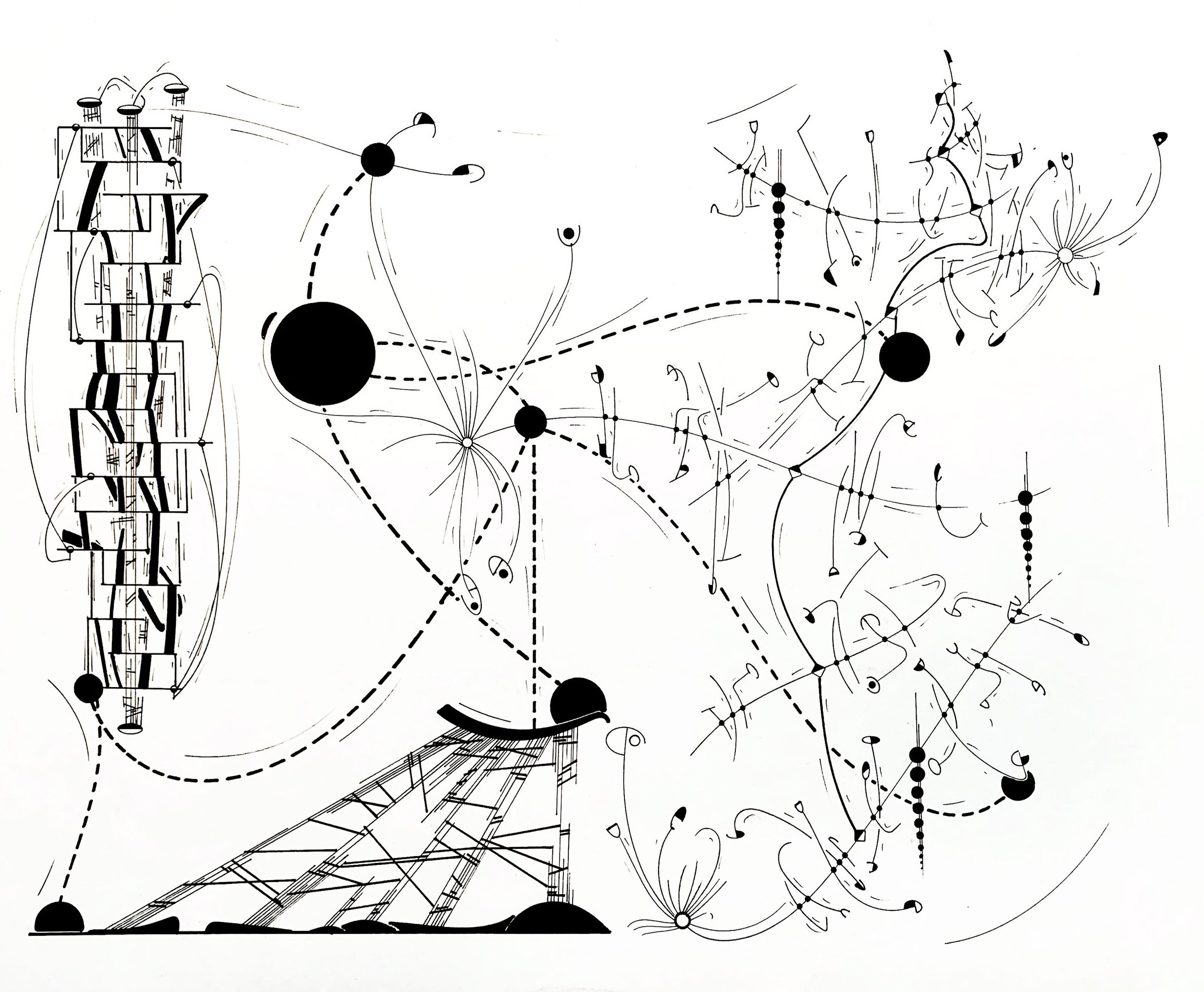
ORIGINAL WORKS
FOR JOHN ZORN (2022)
My Graphic Realization series focuses on reacting to a composition; those compositions are different in every performance, but the work remains constant. The For John Zorn set of acrylic paintings requires responding to a musical artist instead of a piece.
When improvising, a work will never be the same twice. The intriguing artwork stems from the individual. This series of acrylic paintings result from an active painting process immersing myself in John Zorn’s music.
The six canvases are windows into a singular 12-foot work. Acrylic notation from the wall moves into the six canvases to connect them. The presentation of the larger work is like attending a concert; while being present for a performance, you leave with only memories. The material on the wall will disappear at the end of the exhibition, but the memories of the whole will remain.
RECOLLECTIONS (2022 - Current)
A musical score requires immense focus and understanding. Practicing and bringing the notational language to life changes daily as you uncover new ways of weaving together lines, gestures, and structures. In the Recollection series, I use charcoal to interpret the black acrylic notation on the surface of an uneven white canvas. When I return to the canvas each day, new possibilities arise. The charcoal remains malleable and can be altered, layered, or removed. While attempting to perfect this score, the daily practice is a reminder that perfection is unachievable. The process of constantly shifting layers of charcoal and acrylic paint leads to works that highlight the beauty inside this raw and imperfect process.
COMPOSITIONS (2021 - Current)
“…by admitting a new perception of space and giving it an active sense, is it not possible to discover a new unexpected, unexplored world?”
Toru Takemitsu, composer
In visual art, there is most often a directness of communication to the audience. The painter creates a work, and the audience views the work. By contrast, the composer writes the score, the performers interpret the score, and the audience hears that interpretation. Because the focus is on creating sound, the physical work that I, the composer, create is viewed as a tool to produce art. But I always wondered, why can't the score be the work? Why can't the intricate and detailed notations be appreciated for their visual properties? Why can't the score be notated purely for notation's sake? As a composer, a saxophonist, and a visual artist, my love and disdain for the score acts as the catalyst to my Composition series.
GRAPHIC REALIZATIONS (2019 - 2022)
"The beginning of art is not reason. It is the buried treasure of the unconscious... that unconscious which has more understanding than our lucidity."
Edgard Varèse, composer
In music, the “score” is anything that instructs your performance through any combination of symbols, shapes, or words. While a composer creates the score, the only people who ever see it are the performers who interpret it for the audience. What if the “score” was a recording that instructs the creation of a visual work? Graphic Realizations aim to do just this, allowing the visual work to be the performance of the “recording-score.”
Graphic Realization: Fausto Romitelli - Professor Bad Trip, Lesson III
Recording: Ictus, François Deppe, Tom Paewels, Antonio Politano, George-Elie Octors (The Orchard Music, 2007)
14”x17” ink on paper (2021)
ON TEXTURE (2019 - 2022)
"There is no such thing as an empty space or an empty time. There is always something to see, something to hear. In fact, try as we may to make a silence, we cannot."
John Cage, composer
Silence does not exist, and any attempt to create silence amplifies the strained noises beneath the surface. In the space between sounds - in this attempt at silence - there lies a residue of past events and sketches of all things possible. Every idea exists at once in the hopes of rising to the surface and be realized.
ON NOTATION (2017 - 2022)
“The notation is more important than the sound. Not the exactitude and success with which a notation notates a sound; but the musicales of the notation in its notating.”
Cornelius Cardew, composer
The on notation series focuses on semiology and the objects found in musical notation. Stripping them of their traditional context, the series places various shapes and symbols into new structures and shapes that focus on their visual properties instead of their acoustic properties. The new structures focus on creating an appreciation for the uniqueness of the visual aesthetics in a musical score.














